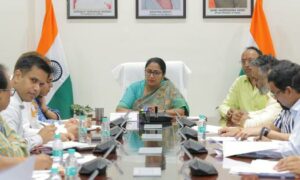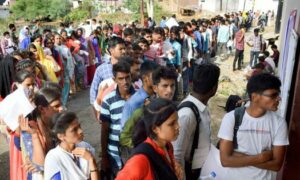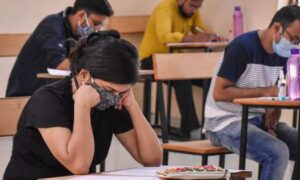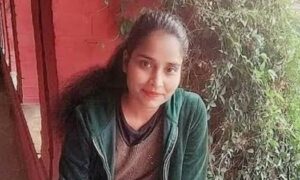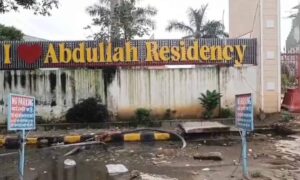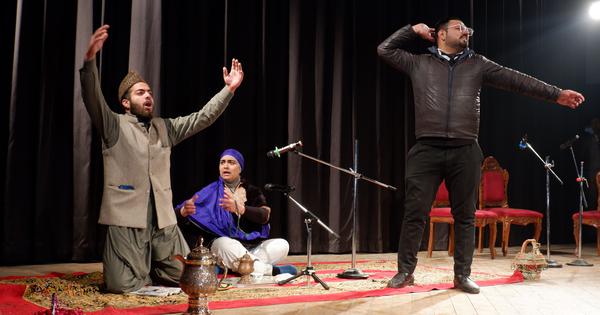
On the morning of July 28, veteran Kashmiri actor Bashir Ahmad Bhat passed away at his modest home in Budgam district. Bhat, who was popularly known by his television name Bashir Kotur, or Bashir the pigeon, died of cancer. He was 53.
Using a unique blend of his voice and acting to enthrall Kashmiri audiences, Bhat was a regular at events, government functions and on television serials. Bhat had been performing since he was five and came from Budgam district’s Hanjigund village, known for its folk artists. His father was also an artist.
Bhat was versatile, said a senior Kashmiri producer who did not want to be identified. “He could sing, write, dance, act and even play musical instruments.”
Months before his death, Bhat had appeared on camera one last time – to appeal for help funding his treatment. It was his second bout of cancer.
Before his cancer diagnosis, the talented actor had been struggling to make a living for a while and had become a street vendor, selling shoes and shawls.
“He also worked as a tea seller,” said Bhat’s wife Shaheena Bashir, her eyes welling up. “I would tell him that I am not comfortable with such a talented person doing this kind of work; he would tell me that a diamond does not lose its value even if it’s kept on dust.”
Bhat’s story mirrors the struggle of other Kashmiri artists. “An artist’s life in Kashmir has become hell despite him being someone who preserves art, culture, language, ethics and values,” said Shabeer Ahmad Hakak, 47, a well-known theatre and broadcast artist, who also works in his brother’s Kashmiri handicrafts business.
In her modest two-room house, Bhat’s wife Shaheena Bashir is bitter. Bhat’s roles and acting won him many fans and supporters but hardly gave him a better life. “My entire house is full of awards he won in his career. But could selling any of those awards have fetched me any money for his treatment?”
“He gave everything to art but it didn’t give him a stable life.”
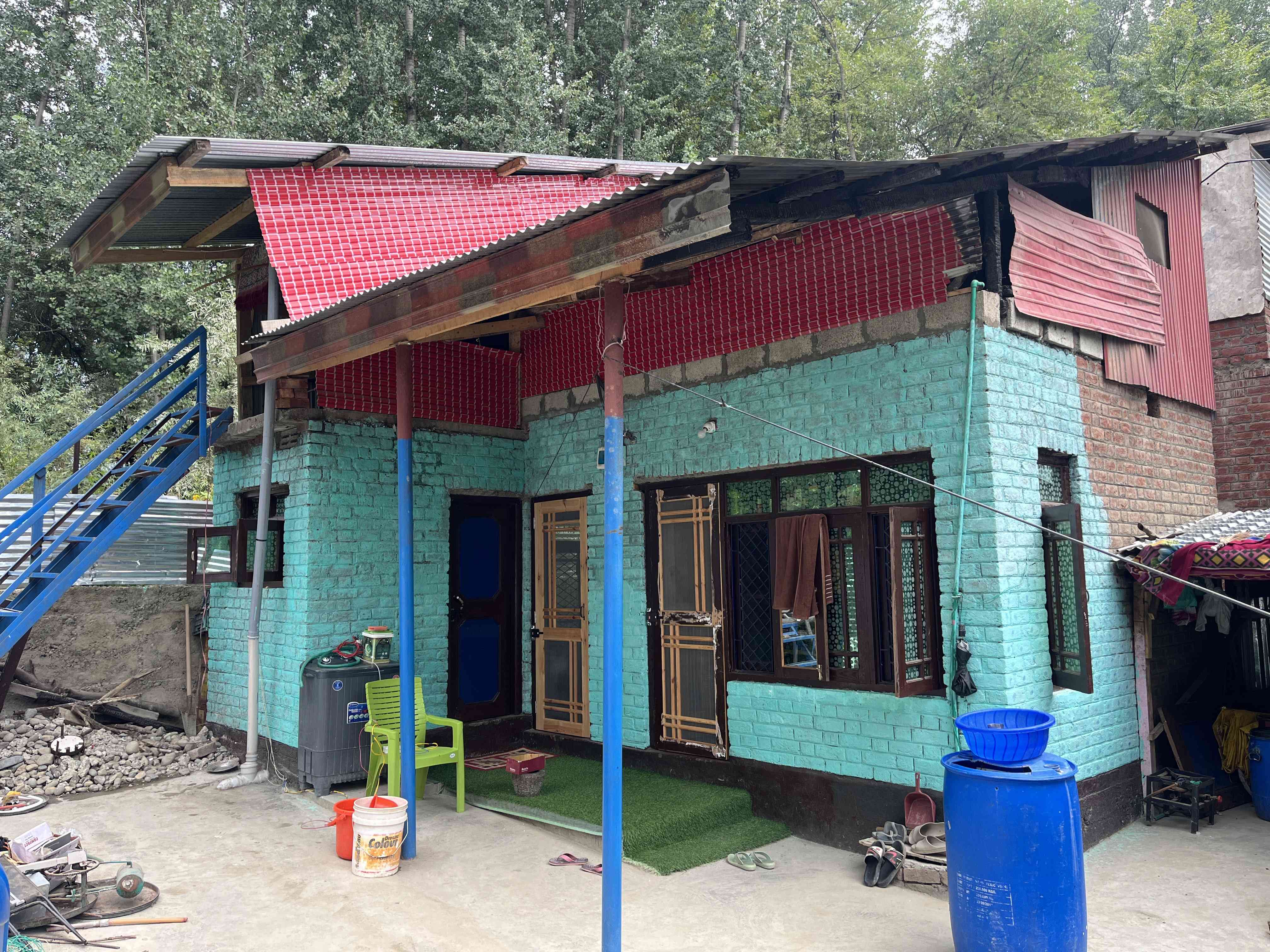
Guns to camera, via DD Kashmir
One of the reasons for their struggle, several artists told Scroll, stems from the near-complete withdrawal of government support over the years.
Traditionally, public broadcasting – whether on radio or television – in Jammu and Kashmir has been aimed at countering Pakistani propaganda about the disputed nature of the region and during times of war.
During the early years of militancy in the 1990s, Doordarshan was one of the few government institutions that did not collapse amidst widespread violence. In fact, one of the first high-profile assassinations by militants in 1990 was of Lassa Kaul, then the director of Doordarshan Kendra, Srinagar.
As the violence ebbed, New Delhi came up with other plans. With a funding of Rs 480 crore, Prasar Bharati launched DD Kashmir in 2000 as a regional-language satellite channel aimed at local Kashmiri audiences and rural areas. “It was basically a home ministry project to ensure that [the] youth of Kashmir pick up cameras instead of guns,” a former senior official who worked at Doordarshan Kendra Srinagar said. He declined to be named.
As a result of the central government’s generosity, the channel announced proposals for in-house and independent productions. “Such was the amount of work that many artists who had full-time jobs quit and then took up acting full-time,” said Ayash Arif, a veteran Kashmiri actor and a producer, who has a doctorate in the indigenous folk theatre of Kashmir and electronic media.
But the good days did not last.
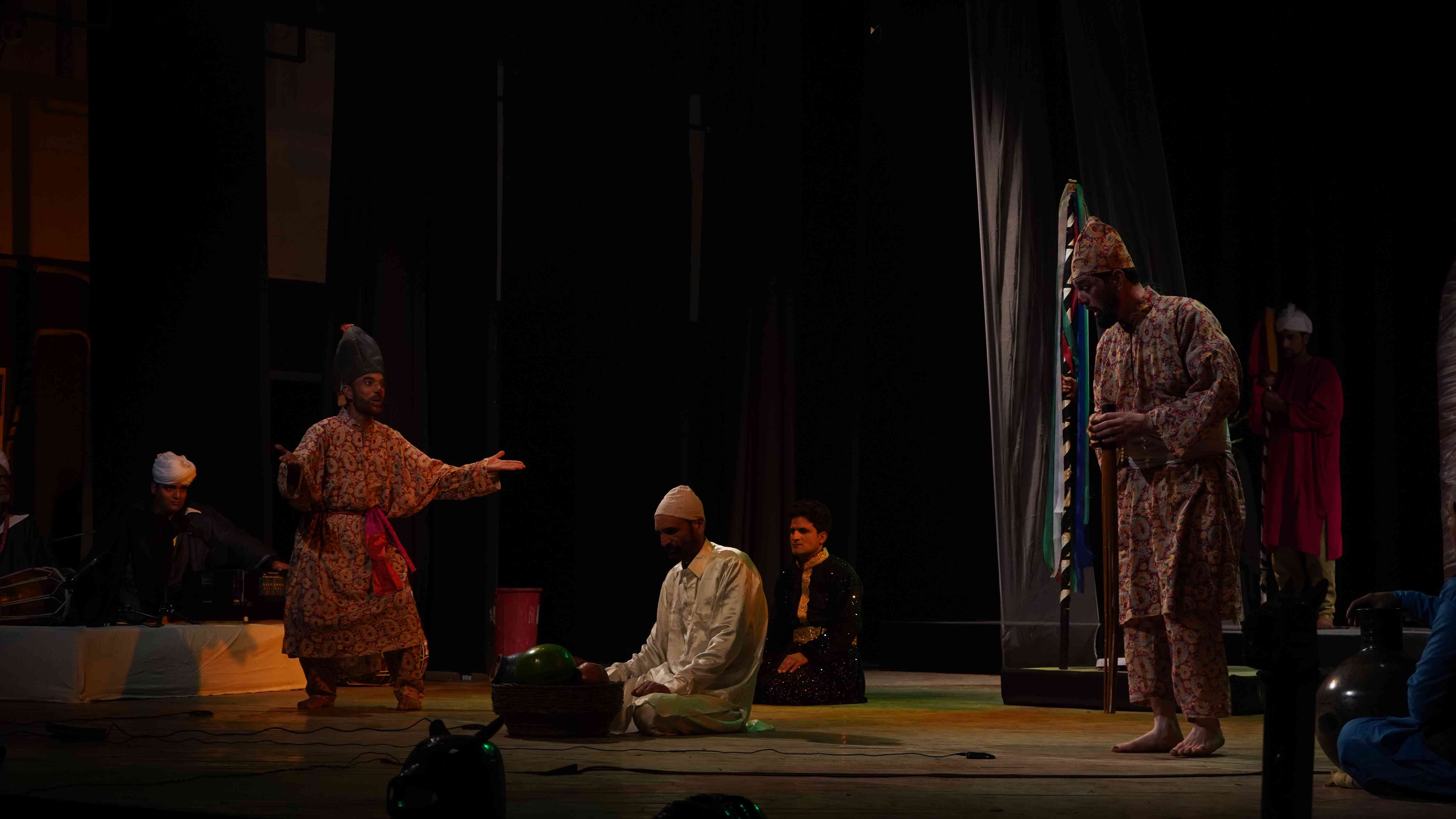
In 2010, the central government broadcaster Prasar Bharati abruptly pulled funding for local productions following a corruption scandal. It left talented and famous television and radio artists, producers and directors in Jammu and Kashmir without work. With no private industry and few alternative platforms, most of these artists, like Bhat, have had to take up other jobs.
For a while, private production houses tried to fill the vacuum. Their content was broadcast on cable television and sold through CDs by distributors. “The money was not much but it sustained us and people really liked it,” said Shaheena Bashir. She met Bhat for the first time while shooting for a private production house in Srinagar.
But when the internet became cheaper and easily accessible and content platforms shifted from televisions to smartphones, independent production houses also shut down their businesses.
“Why would people purchase a CD to watch a drama if it’s already available on YouTube for free?” asked a former private producer who quit the business nearly a decade back. “The decline started when people started selling pirated versions of our original work. That was it.”
It is difficult for artists to switch to social media and internet platforms, said Shaheena Bashir. “A drama or serial needs full-fledged production facilities,” she said. “How can one make a serial in a single room?”
Despite the limitation, she said Bhat had tried his luck on the internet. “He tried to open a YouTube channel but he couldn’t understand the way it worked.”
Long periods of political and security disruptions have prevented local industries and platforms from flourishing. The turbulence in the region has also compelled outsiders to stay away from investing in the local industry.
Hakak said the Centre should take note of the rise of Kashmiri artists in the Hindi film or television industry, despite the lack of any institutional support. “Kashmiri artists are working in Bollywood, they are singers, cinematographers and so on,” he said. “That explains how much talent there is in Kashmir.”
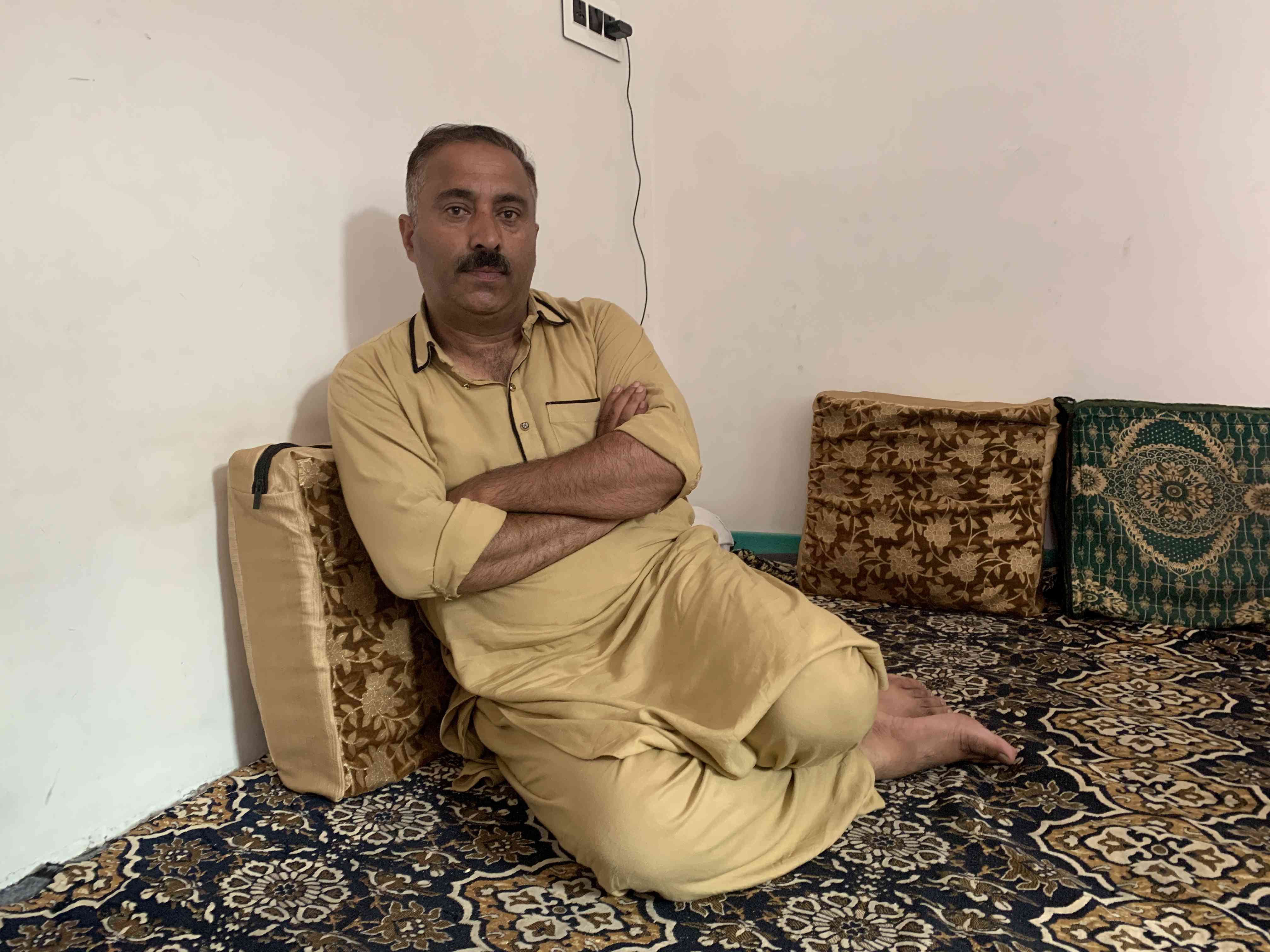
But government support for the performing arts is scant.
Prasar Bharti has shown no initiative to revive local initiatives and is instead looking to cut costs further. Many artists are still to be paid by the public broadcaster for the work they did.
In November 2023, a Right to Information application revealed that Doordarshan Kendra in Srinagar owed more than Rs 25 crore to private producers, production houses, and individuals.
The broadcaster is not interested in what is being shown on the DD Kashmir channel, said Sheikh Javid, one of Kashmir’s oldest actors and producer-director “That’s why you can see there are programmes from Mumbai, Delhi or other areas being broadcast on the channel,” said Javid. “Even our old productions are being broadcast repeatedly.”
Aside from state-run All India Radio and Doordarshan, there is the Jammu and Kashmir Academy of Art, Culture and Language, a government-registered society established for the promotion of languages, arts and culture in the union territory. But the academy’s mandate is broad and catering to performing arts is just one of its responsibilities.
Hakak, who continues to perform when he can, knows this new reality well. “In six months, I get one booking in Radio Kashmir for which I am paid a sum of Rs 1,950,” said Hakak. “How’s that enough to feed my family?”
According to Hakak, it is the publicity wings of government departments, rather than broadcasters and art-promotion institutions, which reach out to him for work.
Hakak still manages to get four-eight bookings a month from the government’s Information and Public Relations department, but it is not enough. “Most of my work comes from government departments who want us to perform awareness programmes before the public,” said “For each booking, I am paid a sum of Rs 1,000. That’s like a joke for an artist like me but what option do I have?”
Still, he is lucky in a way. In 2001, Hakak was appointed a non-permanent daily wager in the government with a monthly salary of Rs 9,200 that supplements his earnings. “Throughout the 24 years since I have been doing that job, the salary has remained the same.”
But others have stumbled in balancing their livelihood, ailing health and passion.
A veteran actor, whose career spans nearly five decades, said he has rented out a section of his house to ensure a monthly income for his family. “I have to pay the semester fees for my son’s education and I had to reach out to friends and well-wishers to raise the amount,” said the actor who has also featured in several Hindi movies.
Given his stature and public image, he asked not to be identified. “It won’t look nice if people come to know about my condition,” he said. “They have a certain image about me and my life.”
The relative of a famous Kashmiri comic artist, who suffered a stroke in 2015 and has been unable to speak or move properly, told Scroll that they have stopped asking for help through the media. “People say a lot of things. They accuse us of making a fortune by selling the pain of the ailing artist.”
Shaheena Bashir said that when Bhat was first diagnosed with stomach cancer in 2023, crowdfunding had helped the family. “He recovered a lot and even after getting chemotherapy, his hair started growing back again,” she recalled.
As soon as he recovered in 2024, Bhat got back to work. “A friend helped him get an autorickshaw on loan,” she said. “But I could see he was not well. He became weak and I would keep insisting that he visit the doctor again.”
Early this year, Bhat’s cancer relapsed. But this time, the doctors told him that the disease had spread to his liver and pancreas. The video appeal Bhat made this year did not elicit a response like it had in 2023. “Perhaps, many thought it was an old video in circulation again,” said Shaheena Bashir.
She tried her best to save her husband. “I sold everything I could to give him the best medical treatment,” she said.
The experience has left the artist disillusioned. Bashir said she is not sure if she will accept any offers to perform – if and when they come. “It’s all useless.”
This article first appeared on Scroll.in
📰 Crime Today News is proudly sponsored by DRYFRUIT & CO – A Brand by eFabby Global LLC
Design & Developed by Yes Mom Hosting

